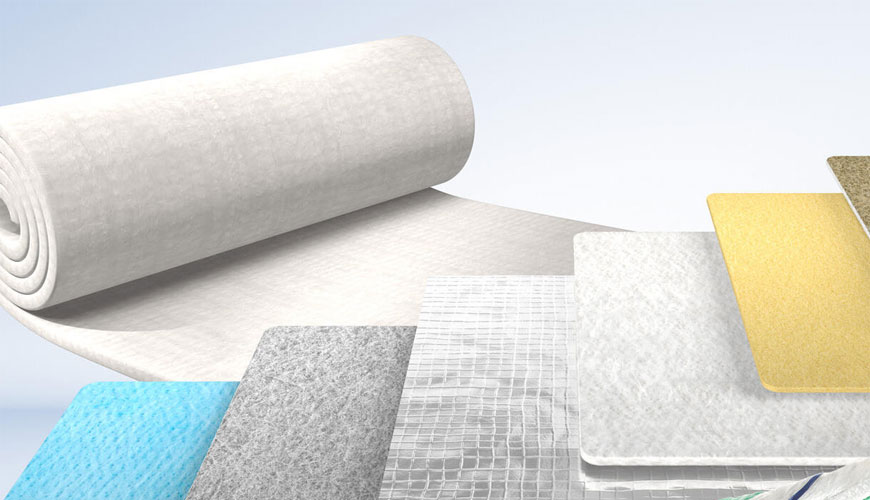Thermal insulation refers to materials used primarily to slow down heat transfer and maintain a stable indoor temperature. It allows buildings and equipment to use less energy for heating and cooling by reducing the rate of unwanted heat loss or gain. There are a wide variety of insulation materials that serve different purposes based on their physical properties.
Common Insulation Materials
Fiberglass: One of the most widely used Thermal Insulation Materials, fiberglass is made from tiny glass fibers. It comes as batts, blankets or loose-fill. As an excellent sound absorber, fiberglass is often the insulation of choice for walls, attics and ductwork. Its downsides include irritating fibers and susceptibility to mold if exposed to moisture.
Mineral Wool: Similar to fiberglass but made from mineral fibers, mineral wool offers effective fire resistance as well as sound absorption. It tends to be denser than fiberglass, making it suitable for walls, roofs and industrial applications. However, mineral wool can also harbor mold if wet.
Polystyrene: Available as extruded polystyrene (XPS) or expanded polystyrene (EPS), this petroleum-based rigid foam insulation has high R-values per inch. It is water resistant, easy to install and often used for foundation walls, rim/band joist areas as well as rigid duct insulation. One disadvantage is its vulnerability to damage from sharp objects.
Polyurethane/Polyisocyanurate: Both of these spray-applied forms create durable, monolithic Thermal Insulation on job sites. Polyurethane can be open or closed-cell while polyisocyanurate is always rigid foam. Excellent R-values and air sealing qualities make these ideal for attics, metal buildings and cool/cold storage installations. High material and labor costs limit their use.
Cellulose: Made from 80-90% recycled paper, cellulose insulation is one of the more eco-friendly options. It can be dense-packed into wall cavities for sound absorption and fire resistance similar to fiberglass. Cellulose may require covered for indoor use due to dust.
Perlite/Vermiculite: Naturally occurring mineral materials, perlite and vermiculite have moisture-wicking and fireproof qualities. They are often used as daily flood coat plasters or additives to improve acoustics and moisture control in other loose-fill insulations. Small particle sizes pose inhalation risks during installation.
Radiant Barriers and Reflective Insulation: Thin metallized plastic films, foils or cardboards designed to reduce radiant heat transfer. Used independently or integrated with other insulations, radiant barriers help regulate indoor temperatures through reflection of infrared and visible light spectrum wavelengths. Appropriate generally only for attics, cathedral ceilings and occasionally walls in hot climates.
Thermal Insulation Applications
Wall Insulation: Fiberglass, mineral wool and spray foams like polyurethane are standard choices to insulate between wood or metal wall studs in framed construction. Dense-packed cellulose can also be blown into wall cavities. Closed-cell spray foams create an effective air barrier/vapor retarder in addition to insulation.
Attic Insulation: Fiberglass batts, loose-fill cellulose/fiberglass and rigid foams are common in attics. Blown cellulose can fill uneven spaces, while foam boards are popular for rim/band joist areas as well as roof deck installations over occupied spaces. Radiant barriers under roof decks help attics stay cooler in summer.
Foundation Insulation: Foam boards like EPS and XPS are well-suited to insulating crawl spaces, basement walls and rim/band joist junctions against ground contact temperatures. Fiberglass batts can insulate floor cavities above unheated basements too. Perimeter drainage planes provide additional moisture protection.
Duct Insulation: Flexible or rigid fiberglass, mineral wool or foam boards wrap supply ductwork to prevent lost heating/cooling capacity. Spray foams thoroughly seal and insulate ducts for peak efficiency. Even ducts in unconditioned spaces like attics benefit from insulation.
Plumbing Insulation: Pre-slit foam sleeves, tubular wraps or self-seal insulation mitigate heat loss from water pipes, preventing condensation as well as water damage. Closed-cell foam sticks securely and withstands moisture better than fiberglass for plumbing insulation.
Thermal Insulation Considerations
Building codes mandate minimum R-values for different climates, helping improve energy efficiency over the years. However, achieving maximum rated insulation performance requires proper installation methods, moisture control strategies and occasional air sealing/insulation upgrades to aging buildings.
Environmentally friendly natural and recycled-content insulation materials reduce ecological impacts compared to petroleum and fiberglass options. Special applications may require assessing additional properties like fire resistance, sound absorption qualities or vapor permeability beyond the primary R-value rating as well. Overall, quality installation and correct material selection for each project area ensures superior long-term thermal protection.
Market Outlook
According to reliable market research published on Coherent Market Insights, the global thermal insulation materials market is projected to witness significant growth during the forecast period supported by factors such as rapid urbanization, green building initiatives, and stringent energy efficiency mandates across countries. Asia Pacific currently dominates the market owing to large-scale infrastructure development activities in China and India. Europe and North America are also substantial regional markets fuelled by renovation of existing buildings and adoption of advanced insulation solutions in industrial applications. The thermal insulation industry is continually innovating to develop advanced materials with improved properties addressing emerging application demands worldwide.
Note:
1. Source: Coherent Market Insights, Public sources, Desk research.
2. We have leveraged AI tools to mine information and compile it.



